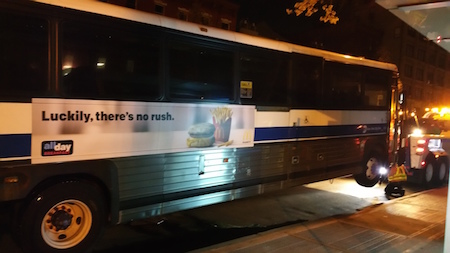I was having a conversation the other day with some colleagues in which I was describing our lab’s research vision of a future reality in which furniture and physical objects are rearranged behind the scenes. I say “behind the scenes” because when you are wearing those future cyber glasses or contact lenses, you can opt not to render, in the view through your lenses, the mobile robots and aerial drones that are conveniently rearranging things in the world for you.
It’s not as though the existence of those helpful robots will be a deep dark secret. It’s more that you generally won’t be interested in looking at them — any more than you are generally interested in looking at the water pipes under your sink or the electrical wires running behind your walls. Unless, that is, you do plumbing or electrical work, in which case you would be very interested in seeing those things. 🙂
We were comparing the operations performed by those future robots to operations that people today expect on their computer desktop, where icons can be rearranged, files can be duplicated or deleted, or an application brought into the foreground or background. Eventually we will come to expect these sorts of operations on the physical objects and furniture around us.
Then the topic of our conversation shifted to the Cloud: Today when I open my favorite web browser on a friend’s computer, I sign in as myself, and all of my preferences show up on that computer screen. One day this is what will happen when I go to a hotel room in a strange city. In the lobby I will sign in using my login, and by the time I get to my room, everything will have arranged itself the way I like it.
The pictures I like will be on the wall, the chairs and desk will be where I want them, the bed will be where I expect it to be. The lighting will be just right, and so will the temperature. Even the view outside my window will be the one I that prefer to see. I will be in a strange city, yet I will also be at home.
